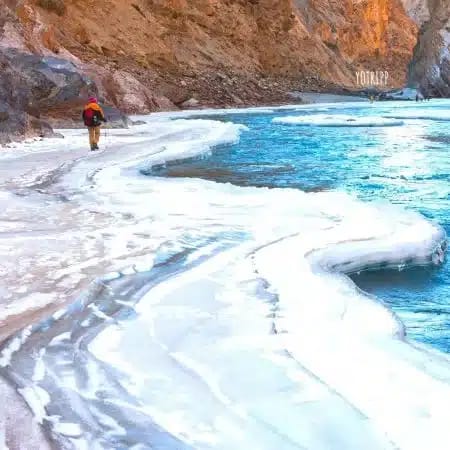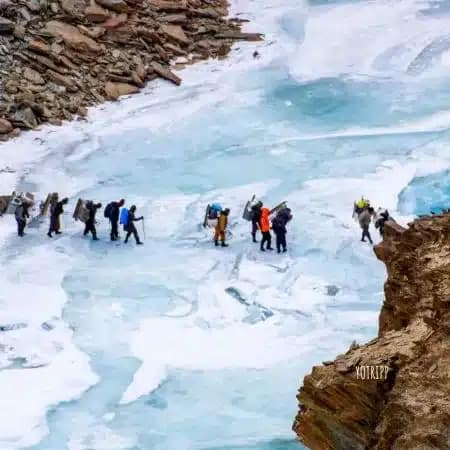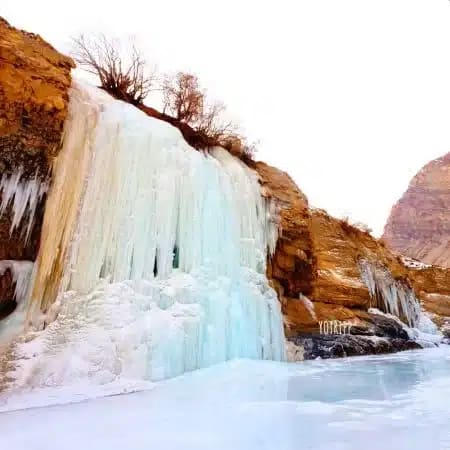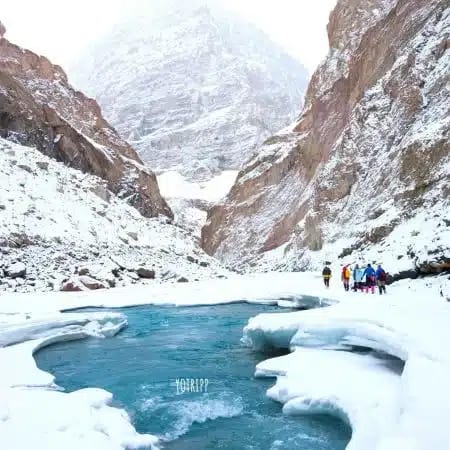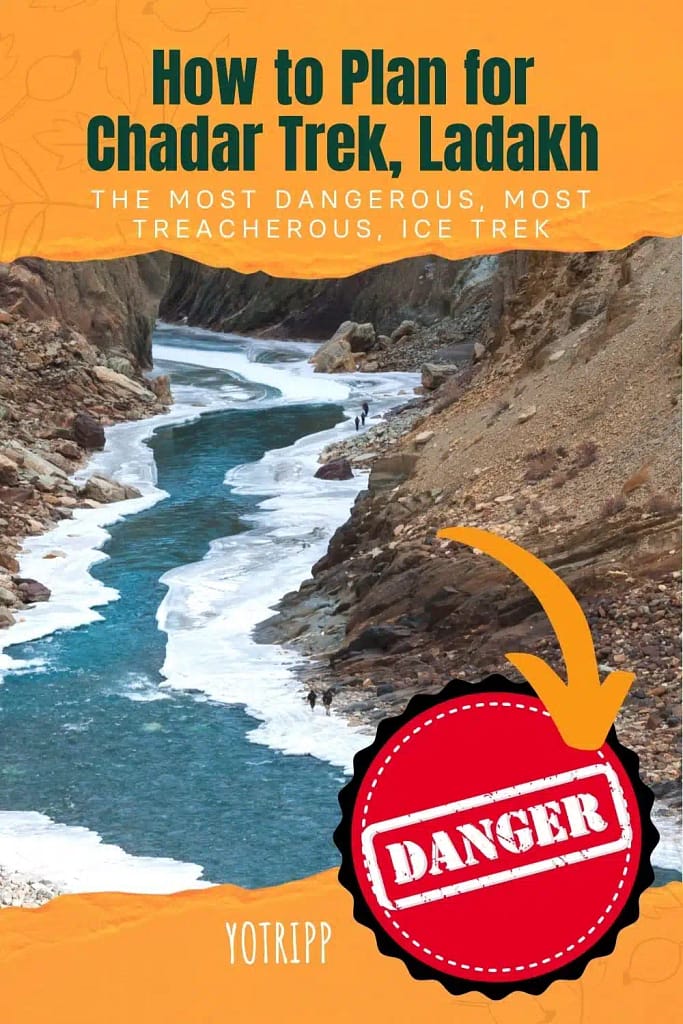CHADAR TREK, LADAKH’S ICE TREK
What is the Chader Trek?
The word “Chadar” in Hindi refers to a ‘blanket’, and that is exactly what the Zanskar valley offers – a blanket of ice!
For years, the Chadar trek has held an aura of mysterious beauty coupled with the magic of the unexpected. In winter months, when the Zanskar river – a north-flowing tributary of the Indus, is frozen, the sheet of ice that forms on it is akin to a blanket of smooth yet treacherous ice. The trek over this frozen river bed that takes you from Chilling village to Zanskar, is a once in a lifetime experience and a must on everyone’s bucket list.
01.
What is Ladakh’s Chadar Trek?
In the Ladakh region of India lies the Zanskar valley. For the people of Padum, Ladakh’s administrative capital, the only way to reach Leh in the winter months, is by crossing this frozen bed of ice over the Zanskar river. This local winter trail has eventually turned into a trekker’s delight and the route sees a lot of tourists every year. In summers, the Zanskar river offers great opportunities for rafting.
02.
What Makes the Chadar Trek Unique?
There is no dearth of icy mountains and glaciers in the country, but what makes the Chadar trek special is its natural beauty and endangered status. Walking across deep ravines, with towering mountains on both sides and sunlight glinting off frozen waterfalls is indeed a miracle of nature that one doesn’t see very often. The sheet of ice that you walk over tends to change every year too, adding to the surprise element in this trek.
Local authorities have plans to build roads in the mountains to increase accessibility for the villagers. Once this construction is complete, it may render the Chadar trek route obsolete.
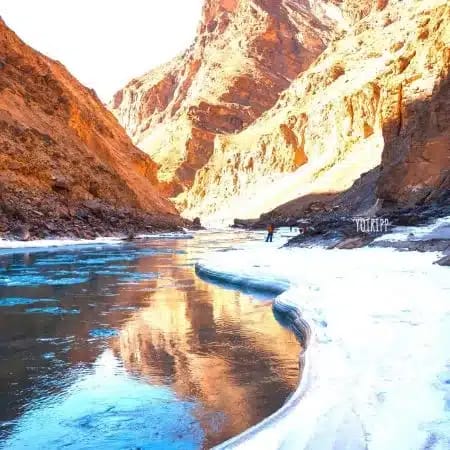
Picture Courtesy:YOTRIPP via Canva Pro
03.
Challenges for Trekkers
This is not a trek for the unprepared and the untrained who set off hiking on a whim. Most Himalayan treks require a good level of physical fitness and training in mountain climbing. The local administration has recently made it mandatory for all trekkers to undergo a medical examination at the Sonam Norbu Hospital. You will only be allowed to commence the trek after you receive a fitness certificate. All your trekking gear needs to be in top shape too.
Freezing temperatures are not the only challenge that trekkers have to face here. Acute Mountain Sickness (AMS), unpredictable weather, thin patches of ice, long distances to be covered on foot, frozen food and lack of oxygen are just a few things that make the Chadar trek one of the most dangerous yet thrilling treks in the world.
If you are ready to walk for 6 to 7 hours each day in temperatures reaching -15 to -30 degrees, and at an altitude higher than 11,000 ft, the Chadar trek is indeed a mesmerizing experience.
04.
Highlights of the Chadar Trek
Walking many kilometres across a frozen sheet of ice is not all. You will witness numerous wonders of nature on this route. One of the popular highlights of this trek is the magnificent Nerak waterfall which, like the river is completely frozen. Tibb, with its many caves, provides trekkers with shelter for their night stays and also gives you a chance to interact with fellow trekkers and the locals.
As you cover this route, you get a glimpse of the region’s flora and fauna. And if you are lucky, you may just spot a snow leopard or an ibex. Most groups end their trek in Lingshed – one of the oldest villages in Ladakh and home to one of the world’s oldest monasteries.
05.
An Endangered Trek
So far, the trek was threatened by the new roads being constructed which would result in the frozen river trail being left unused. But recently, there have been talks of a possible ban of the Chadar Trek owing to global warming, climate changes and high human presence that have deeply disturbed the ecology of the area. It is believed that the river may cease to exist in the next few years, putting an end to the adrenaline-pumping Chadar trek.
Trekkers are requested to undertake the necessary checks and seek required permissions before planning the tour. The Chadar Trek is a unique Himalayan expedition that beckons all those ready to conquer new heights, literally and metaphorically!
YOTRIPP hotel recommendation in Ladakh: The Grand Dragon Ladakh

